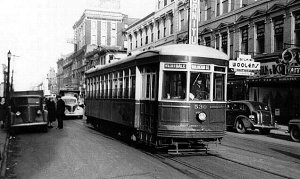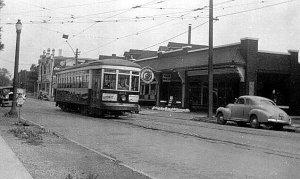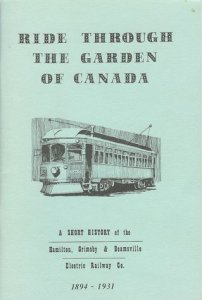Knowing that some guys like interurbans I thought we should look at a long gone line.
The Hamilton Radial Railway was Incorporated in 1893. Eleven miles of line from downtown Hamilton, ON via Burlington Beach to the town of Burlington were completed in 1897 and the line was extended to Port Nelson the following year. In March 1906 the Hamilton Radial Railway was extended from Burlington east to Oakville on a private right of way parallel to the highway and graded for a second track. A combined passenger station and substation was built at Randall and Thomas Streets in Oakville (see link below) and rails continued east on Randall Street for some distance.
http://gencat.eloquent-systems.com/webcat/systems/toronto.arch/resource/fo1244/f1244_it1075.jpg
Frequent service was operated to Burlington Beach resort during the summer months.
The Oakville extension ruined the line financially. The line between Burlington and Oakville was abandoned on August 3, 1925 and the remainder of Hamilton Radial Railway was abandoned January 3, 1929.
The Hamilton Radial Railway was Incorporated in 1893. Eleven miles of line from downtown Hamilton, ON via Burlington Beach to the town of Burlington were completed in 1897 and the line was extended to Port Nelson the following year. In March 1906 the Hamilton Radial Railway was extended from Burlington east to Oakville on a private right of way parallel to the highway and graded for a second track. A combined passenger station and substation was built at Randall and Thomas Streets in Oakville (see link below) and rails continued east on Randall Street for some distance.
http://gencat.eloquent-systems.com/webcat/systems/toronto.arch/resource/fo1244/f1244_it1075.jpg
Frequent service was operated to Burlington Beach resort during the summer months.
The Oakville extension ruined the line financially. The line between Burlington and Oakville was abandoned on August 3, 1925 and the remainder of Hamilton Radial Railway was abandoned January 3, 1929.




